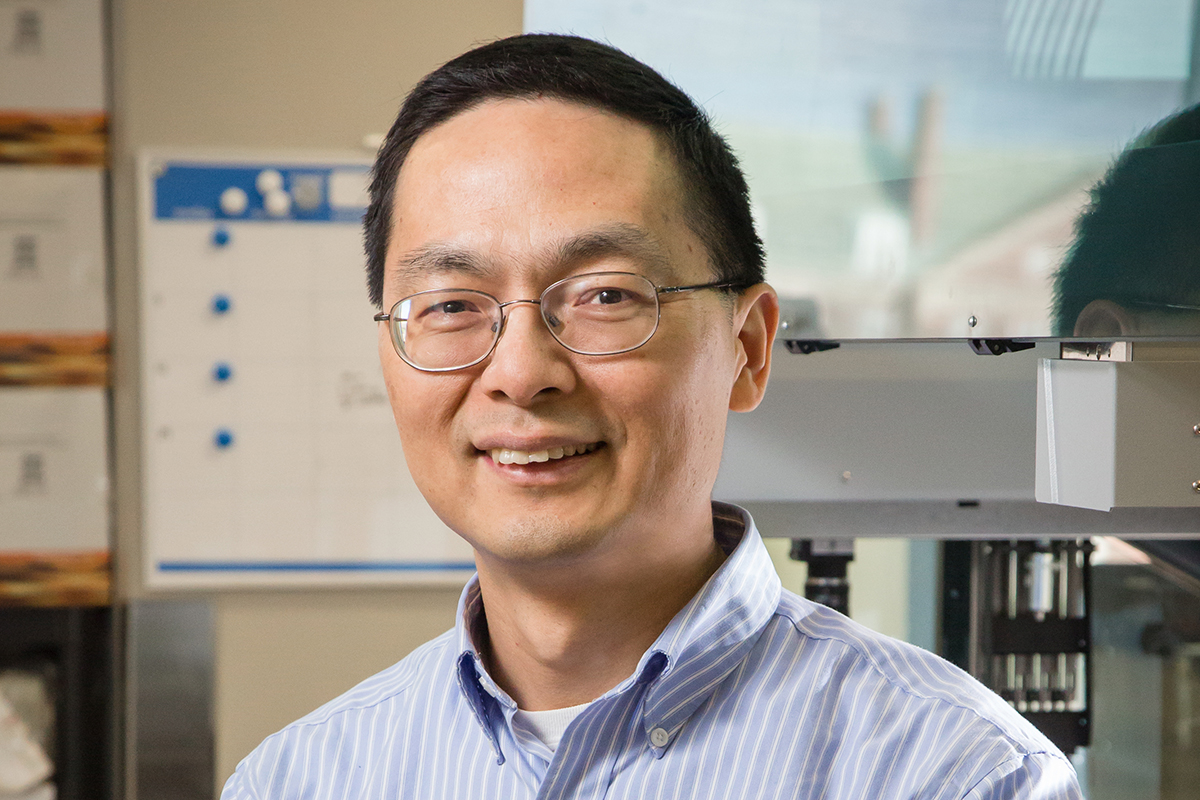For CRISPR, tweaking DNA fragments yields highest efficiency rates yet
University of Illinois researchers achieved the highest reported rates of inserting genes into human cells with the CRISPR-Cas9 gene-editing system, a necessary step for harnessing CRISPR for clinical gene-therapy applications.
By chemically tweaking the ends of the DNA to be inserted, the new technique is up to five times more efficient than current approaches. The researchers saw improvements at various genetic locations tested in a human kidney cell line, even seeing 65% insertion at one site where the previous high had been 15%.

Led by chemical and biomolecular engineering professor Huimin Zhao (BSD leader/CABBI/MMG), the researchers published their work in the journal Nature Chemical Biology.
Researchers have found CRISPR to be an efficient tool to turn off, or “knock out,” a gene. However, in human cells, it has not been a very efficient way to insert or “knock in” a gene.
“A good knock-in method is important for both gene-therapy applications and for basic biological research to study gene function,” said Zhao. “With a knock-in method, we can add a label to any gene, study its function and see how gene expression is affected by cancer or changes in chromosome structure. Or for gene-therapy applications, if someone has a disease caused by a missing gene, we want to be able to insert it.”
Searching for a way to increase efficiency, Zhao’s group looked at 13 different ways to modify the inserted DNA. They found that small changes to the very end of the DNA increased both the speed and efficiency of insertion.
Then, the researchers tested inserting end-modified DNA fragments of varying sizes at multiple points in the genome, using CRISPR-Cas9 to precisely target specific sites for insertion. They found efficiency improved two to five times, even when inserting larger DNA fragments – the most difficult insertion to make.
“We speculate that the efficiency improved so much because the chemical modification to the end stabilizes the DNA we are inserting,” Zhao said. “Normally, when you try to transfer DNA into the cell, it gets degraded by enzymes that eat away at it from the ends. We think our chemical addition protects the ends. More DNA is getting into the nucleus, and that DNA is more stable, so that’s why I think it has a higher chance to be integrated into the chromosome.”
Zhao’s group already is using the method to tag essential genes in gene function studies. They purposely used off-the-shelf chemicals to modify the DNA fragments so that other research teams could use the same method for their own genetic studies.
“We’ve developed quite a few knock-in methods in the past, but we never thought about just using chemicals to increase the stability of the DNA we want to insert,” Zhao said. “It’s a simple strategy, but it works.”
The National Institutes of Health supported this work. Zhao also is affiliated with the Carle Illinois College of Medicine.
